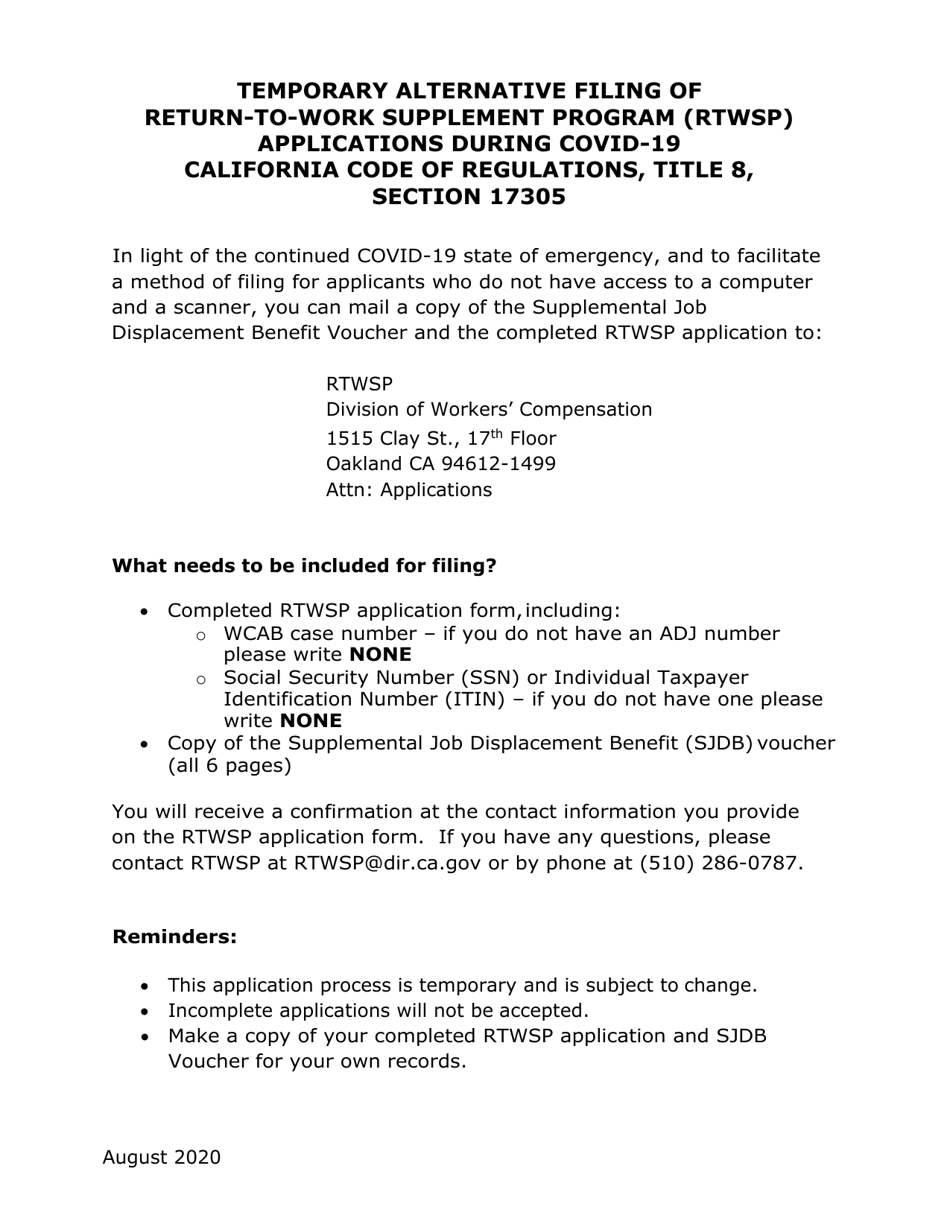California has been a leader in the development of return-to-work programs, and there are a number of resources available to help employers develop and implement these programs.
One of the most important resources is the California Department of Industrial Relations (DIR), which has developed a comprehensive return to work program template that can be used by employers of all sizes. The template includes all of the essential elements of a return-to-work program, as well as best practices and resources.

What is a Return-to-Work Program?
A return-to-work program (RTW program) is a systematic process that helps injured workers return to work as quickly and safely as possible. RTW programs can be tailored to the specific needs of the employee and the employer, and are designed to promote a safe return to work while reducing the risk of re-injury.
The DIR’s return-to-work program template includes the following elements:
- A description of the program’s purpose and goals
- A list of the essential elements of the program
- A step-by-step guide to developing and implementing the program
- A sample return-to-work agreement
- Resources and information for employers and employees
The DIR’s return-to-work program template is a valuable resource for employers who are looking to develop and implement a return-to-work program. The template can be used by employers of all sizes and industries, and is designed to help employers comply with California law and best practices.
Benefits of a Return-to-Work Program
There are a number of benefits to implementing a return-to-work program. These benefits include:
- Reduced costs: A return-to-work program can help employers reduce costs by reducing the amount of time that employees are off work due to injury or illness.
- Increased productivity: A return-to-work program can help employers increase productivity by getting injured workers back to work as quickly and safely as possible.
- Improved employee morale: A return-to-work program can help improve employee morale by showing employees that the employer is committed to their well-being.
- Reduced risk of re-injury: A return-to-work program can help reduce the risk of re-injury by providing employees with the necessary support and resources to return to work safely.
If you are an employer in California, I encourage you to consider developing and implementing a return-to-work program. The DIR’s return-to-work program template is a valuable resource that can help you get started. A return-to-work program can help you reduce costs, increase productivity, improve employee morale, and reduce the risk of re-injury.